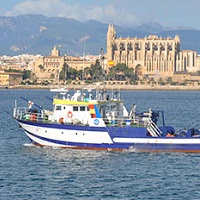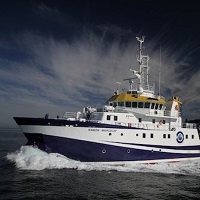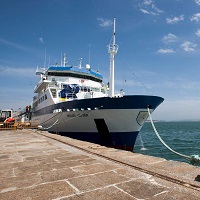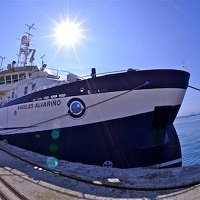Keyword
Concentration of organic matter in sediments
31 record(s)
Type of resources
Categories
Topics
INSPIRE themes
Keywords
Contact for the resource
Provided by
Years
Formats
Status
-

1.El objetivo principal es aumentar la resolución de la cartografía bionómica realizada con los datos de la campaña anterior (DRAGONSAL_0712), con especial énfasis en la delimitación de los fondos de maerl. 2.Validar los resultados de reflectividad del fondo. 3.Evaluar las diferencias en densidad y composición faunística y florística en hábitats de Peyssonnelia identificados en la campaña precedente y situados en dos zonas cercanas sometidas a distinta actividad pesquera de arrastre (zona impactada/zona no impactada). 4.Determinar la fuente de los nutrientes (natural o antropogénica) que favorece la elevada densidad de macroalgas rojas.
-

Estudio de distribución de contaminantes y sus efectos en el salmonete de fango y sedimento de la costa mediterranea española.
-

Estudio de distribución de contaminantes y sus efectos en el salmonete de fango y sedimento de la costa mediterranea española.
-

Estudio de distribución de contaminantes y sus efectos en el salmonete de fango y sedimento de la costa mediterranea española.
-
The Western Iberian Margin (WIM) the area of interest for this cruise is located at the slope of the Southwest coast of Portugal (depths from 200 to 800 meters), where otter trawling is occurring on a continuous base, targeting Norway lobster (Nephrops norvegicus). The area includes fishing grounds with different levels of impact (from no fishing to intense trawling and fixed nets). We identified three main objectives for this sampling campaign: 1) Identify areas of high and low fishing intensity by means of side scan sonar and ROV exploration 2) Sample different areas/depths between 200 and 1000 m water depth for benthos with box corer and multiple corer 3) Collect sediments from the fished and the non‐fished site with box corer or multiple corer for onboard experiments in which different measures of ecosystem functioning will be measured 4) Collect colonization trays at food fall site with the ROV (uAveiro)
-

The objective of this campaign is the sampling of sediments. These sediments will be used to assess the organic and inorganic pollutants in the marine area, as well as the possible biological effects of contaminants. In this survey, along with the traditional pollutants, the presence of microplastics in sediments will also be evaluated.
-

Analyze and evaluate the environmental impact on the coastal area of Gibraltar caused by the dumping of concrete and rock blocks into the sea.
-

Training of students of the Master of Marine Sciences: Oceanography and Marine Environment Management of the University of Barcelona.
-

Evaluation of the effect of spills of emissaries in the Bay of Palma de Mallorca
-

The main objective of this Survey is to assess the conservation status of habitat 1120 Posidonia oceanica in the Gorguel area and its surroundings. Additionally, a detailed geophysical survey (multibeam and TOPAS) will be carried out in areas adjacent and close to the posidonia meadows in order to delimit their possible extension, both on the surface and in depth.
 Catálogo de datos del IEO
Catálogo de datos del IEO